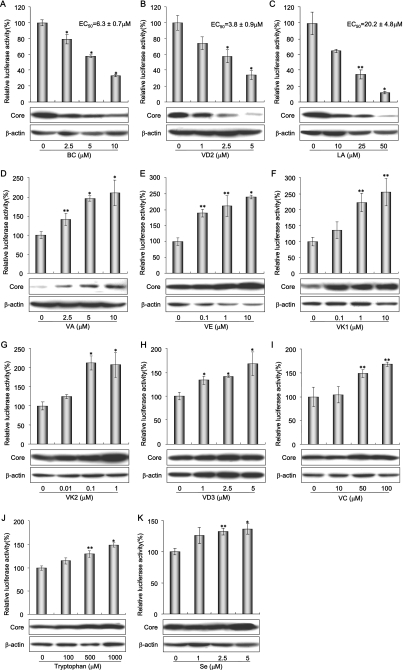FIG. 2.
Effects of ordinary nutrients on HCV RNA-replicating cells. (A through K) Reporter assay and Western blot analysis of nutrient sensitivity of HCV RNA replication. OR6 cells were treated with each nutrient at a four-grade-modulated concentration in the medium. After 72 h of treatment, the RL assay was performed as described in Materials and Methods. Shown here are the percent relative luciferase activities calculated when the RL activity of untreated cells was assigned the value of 100%. The data indicate means ± SDs of triplicate samples from at least three independent experiments. Subsequently, OR6c cells, into which authentic HCV RNA was introduced, were treated with nutrients exhibiting either inhibitory effects, i.e., BC (A), VD2 (B), and LA (C), or promotive effects, i.e., VA (D), VE (E), VK1 (F), VK2 (G), VD3 (H), VC (I), tryptophan (J), and Se (K) at the same concentrations as those used in the OR6 assay (bar graphs). After 72 h of treatment, the production of HCV core antigen was analyzed by immunoblotting using antibody specific to HCV core antigen (upper lanes). β-Actin was used as a control for the amount of protein loaded per lane (lower lanes). *, P < 0.01; **, P < 0.05.

